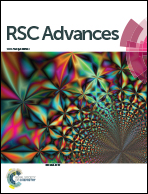In situ fast analysis of cadmium in rice by diluted acid extraction-anodic stripping voltammetry
Abstract
In China, the production has not realized intensive cultivation and the problem of cadmium (Cd)-contaminated rice is salient, so it is important to classify rice with different degrees of Cd pollution by rapid detection method in situ. This paper established a method with a combination of dilute acid extraction pretreatment and electrochemical devices. Cd was extracted from rice using 3% HCl for 5 min. A standard curve was obtained based on a certified reference material in the rice matrix with different concentrations of Cd, which was fitted with the Cd concentration (μg kg−1) against the stripping peak current value (μA), and the linear correlation coefficient was 0.9997. To analyze the applicability of the method, three factors including substrate diluents, particle diameter of the sample, and stability towards the method were evaluated. The limit of detection (LOD) was 2.02 μg kg−1, and the repeatability and accuracy were satisfactory. Cd was determined in 142 samples collected from three major grain-producing provinces of China, and the results have good consistence with the microwave digestion-ICP-MS method. The developed method combined dilute acid extraction with a matrix matching standard curve in ASV for the first time, and it was significantly satisfactory for the detection requirements in China.



 Please wait while we load your content...
Please wait while we load your content...